Analysis: Dissecting Every Stage Of The 2021 Tour de France
Analysis: Dissecting Every Stage Of The 2021 Tour de France
We breakdown every stage of the recently unveiled 2021 Tour de France route.
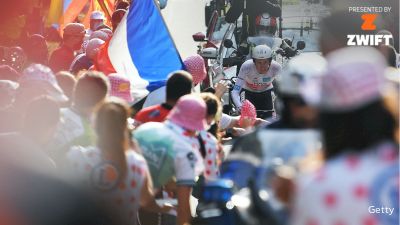
The 2021 Tour de France was meant to depart from Copenhagen, but due to the global reshuffling of events resulting from Covid-19, Brittany and Copenhagen have traded years.
As a result, the Tour de France will spend its first four days in France's northwestern-most corner.
Most of the world may know Brittany for its seaside attractions and megalithic monuments (the Carnac Stones), but in cycling the region is famous for punchy climbs and damaging winds.
The terrain and weather of Brittany mirror those of the Belgian classics, which means the opening stages of the 2021 Tour de France will prove as chaotic as ever.
Stage 1
The first stage does justice to Brittany's cycling character. Riddled with punchy climbs, 6 of which are categorized, day one will make for a very hectic battle for the race's first polka dot jersey.
Nobody will win the Tour de France on the race's first day, but a few riders might lose a shot at the overall classification — an adage that rings true in 2021. The difficult parcours finishes on a three kilometer climb averaging just over 5% in gradient. The stage has been dubbed a "puncheur's paradise" by the race organization. The GC contenders will face a particularly stressful opening stage, with crashes and time gaps nearly certain as the race approaches its finale.

Stage 2
Stage two provides a slightly less demanding start, but the explosive finale tackles two ascents of the Mur de Bretagne.
The first ascent features the first time bonus sprint of the Tour, which will draw out GC contenders and blow the race apart before the finishing climb.
The women's La Course will be run the same day and will also finish on top of the two kilometer long Mur de Bretagne.

Stage 3
The sprinters will be eager for an opportunity on stage three of the Tour. However, the race will still be on the unpredictable roads of Brittany, where the risk of echelons and upsets remain ever present.
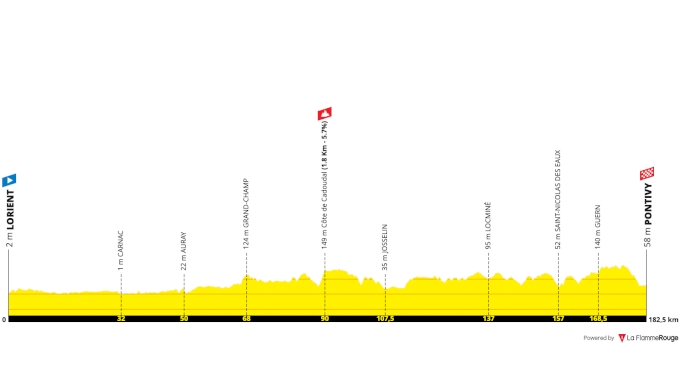
Stage 4
At only 151 kilometers, there should be little standing in the way of sprinters contesting the race's final stage in Brittany.
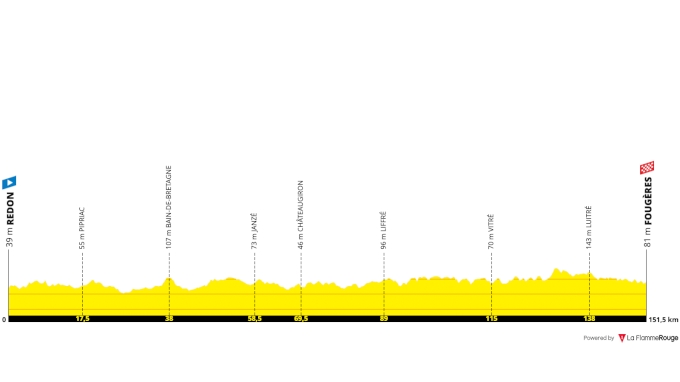
Stage 5
The first of two individual time trials arrives on stage five. GC contenders that excel in the time trial will be under a great deal of pressure to give themselves a buffer over their lighter-weight rivals, because many opportunities await the climbers in the coming weeks.
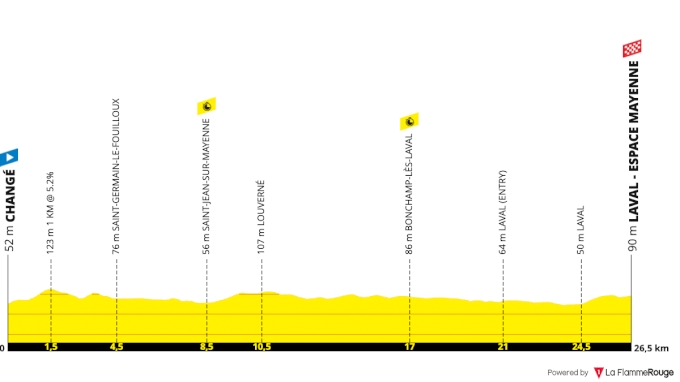
Stage 6
Another likely sprint stage falls after the time trial, but nothing about the first week of this Tour should be written off as predictable. Stage 6 departs from Tours, and features many of the roads seen in Paris-Tours, the often windswept French Classic. Expect another nervous day in the peloton with the threat of echelons lurking around every exposed corner.
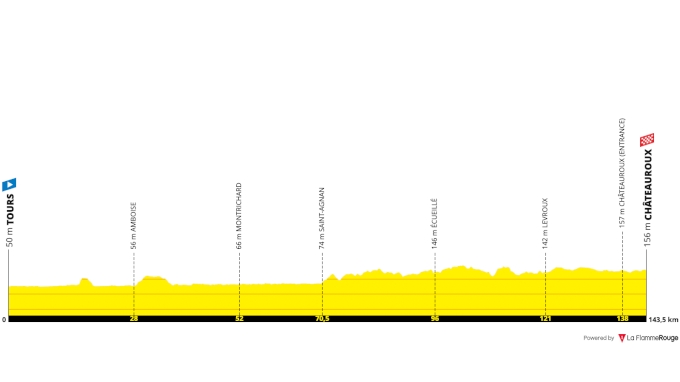
Stage 7
At 248 kilometers long, stage 7 is not only the longest stage of the race, it is the longest stage of any Tour de France in the last 20 years. However, stage 7 isn't just a human powered transfer day with a sprint at the finish. The stage includes genuinely enthralling roads and culminates in a hilly and consequential final 50 kilometers.
As an added measure to ensure the GC riders are drawn out in the finale, time bonuses are on offer to the first riders to reach the summit of the penultimate climb.
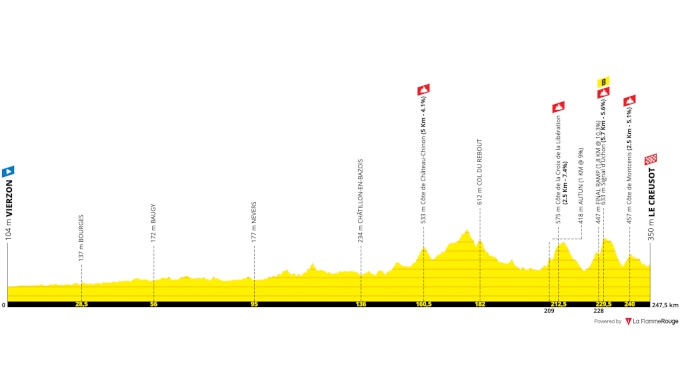 Stage 8
Stage 8
Stage 8 leaves the Massif Central and brings the race into the Alps. The stage has no shortage of climbs packed into its 151 kilometers, but the final three will draw out the best climbers in the race (and perhaps weed out a few pretenders).
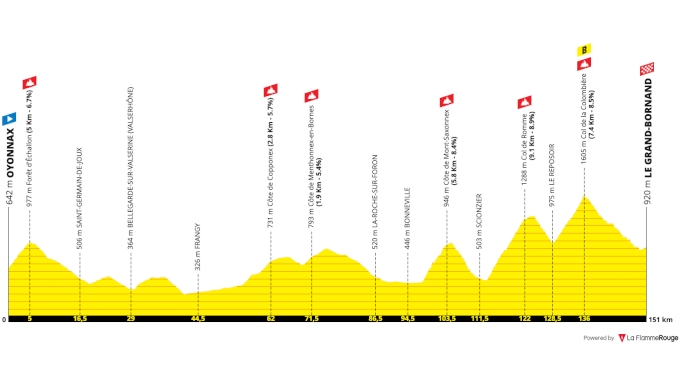
Stage 9
Stage 19 of the 2019 TdF was meant to finish in Tignes before landslides prematurely ended the race. Tignes seeks to redeem itself in 2021 by hosting another major GC day.
The peloton will remain in the mountain town for the subsequent rest day as well.
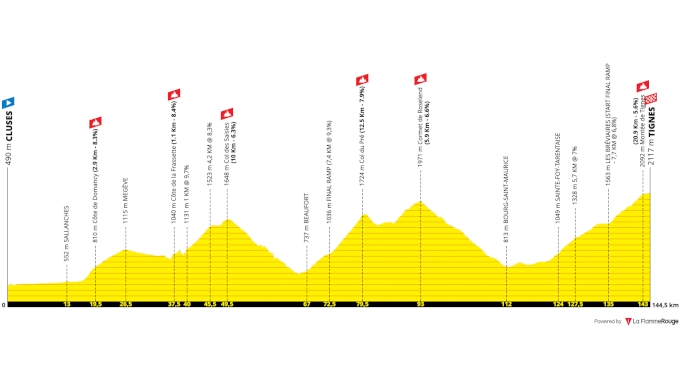
Stage 10
Stage 10 is mostly downhill as the peloton leaves the Alps behind them. The last time the Tour visited Valence, Peter Sagan emerged victorious. This year's run to Valence should once again suit a rider with Sagan's ability.
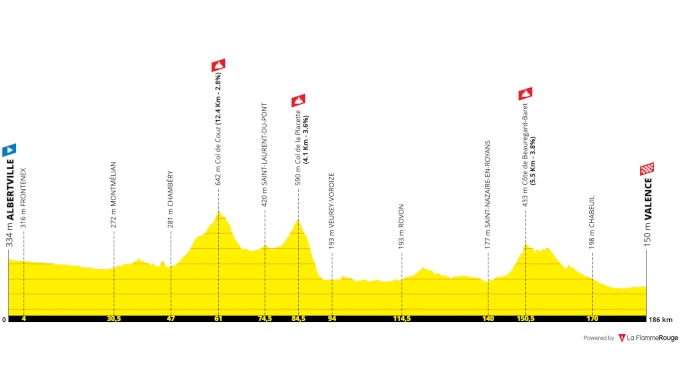
Stage 11
The stage everyone is talking about, stage 11 climbs to the top of Mont Ventoux not once, but twice. With 4,500 meters of climbing, this is the most vertically demanding stage of the tour — at least on paper.
At 200 kilometers in length, GC riders will feel little incentive to attack the long and gradual first pass of Ventoux. As the peloton loops around to climb the more traditional route up the Giant of Provence, expect fireworks up and over the mountain's barren summit before riders plunge down to the finish in Malaucène.

Stage 12
The final kilometers of stage 12 are an identical copy of the 2019 stage into Nîmes that was won by Caleb Ewan.
Once again though, the sprinters will have to contend with a challenging mid-section of the race if they hope to make it to the finishing straight in the front group.
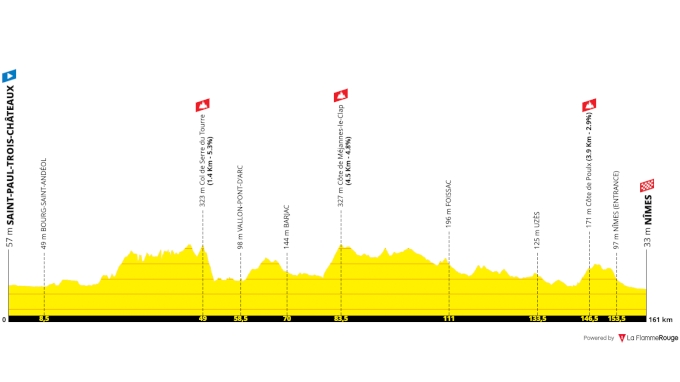
Stage 13
At 220 kilometers in length, stage 13 is the second longest stage of the race. The Tour has previously raced from Carcassonne to Nîmes, but over a much shorter distance.
As a response to certain critics calling for enhanced rider safety measures, the Tour de France organizers have avoided a troublesome bit of traffic furniture along the route of stage 13 by taking the peloton the long way around.
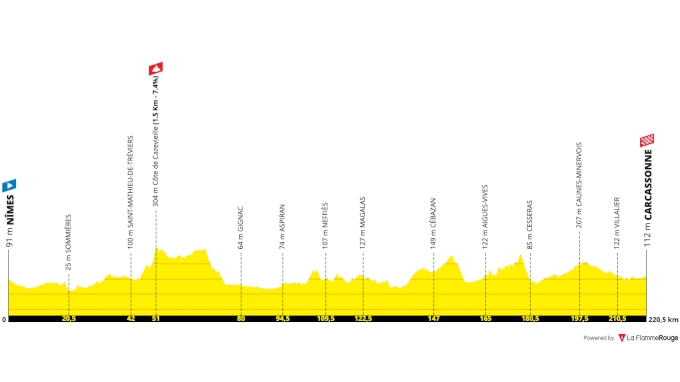
Stage 14
Stage 14 takes the riders into the Pyrenees, where the race's most consequential mountain battles will be fought in 2021. The demanding stage should favor the breakaway as GC riders prepare for more consequential days ahead.
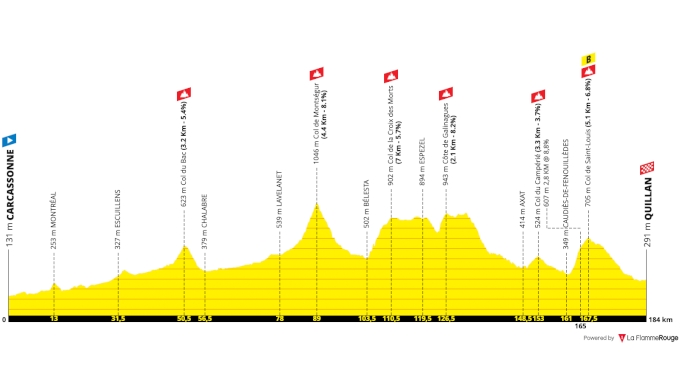
Stage 15
Stage 15 brings a major climbing day through the Catalan Pyrenees. The stage features the highest point of the 2021 route, the Port d’Envalira with a summit of 2,408 meters.
The race will finish in Andorra where the peloton will settle in for its second rest day. With a rest day in sight, expect a fierce GC battle that will favor riders comfortable with high altitudes.
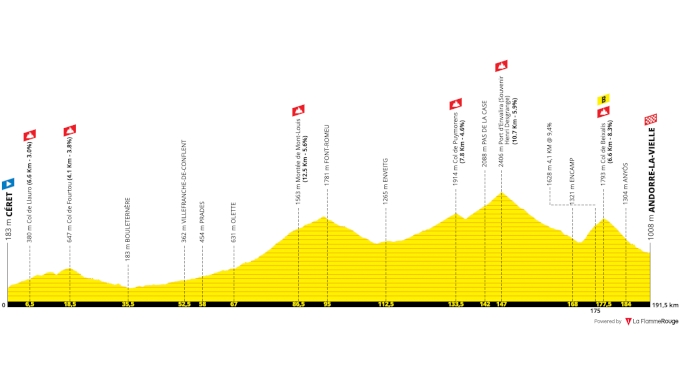
Stage 16
After a rest day in Andorra the lumpy 169 kilometer stage 16 will tempt breakaway opportunists.
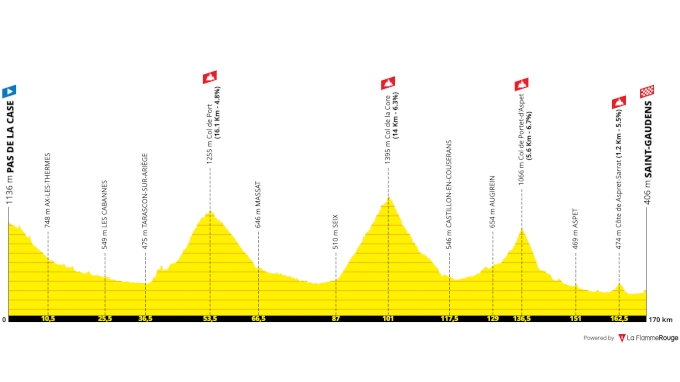
Stage 17
Expect to see a breakaway escape early in stage 17 only to be gradually hunted down as the first of two major mountain finales loom. The final kilometers of stage 17 are nearly nearly identical to the 2018 Tour's queen stage which was won by Nairo Quintana atop the giant Col du Portet.
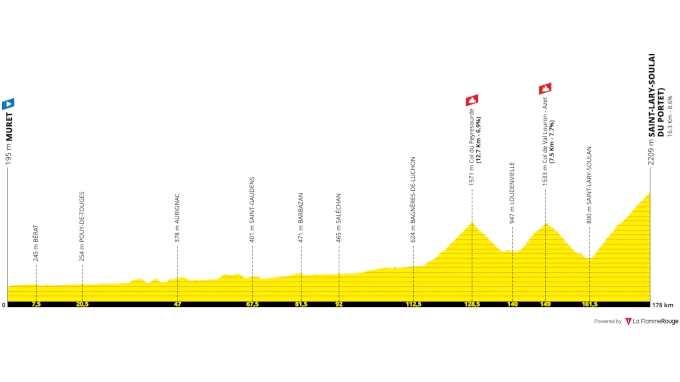
Stage 18
A scant 130 kilometers. stage 18 is the final mountain stage of the Tour. Before the summit finish of Luz Ardiden, the peloton will go up and over the iconic Col du Tourmalet.
Expect nonstop action as the stage will be the final opportunity for climbers to make a difference.
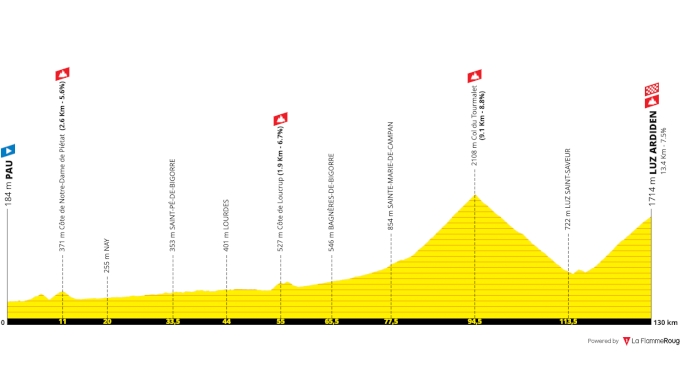
Stage 19
Sprinters should be be given a clean run at the 203 kilometer stage 19 as many in the peloton will be preoccupied by thoughts of the stage 20 individual time trial.
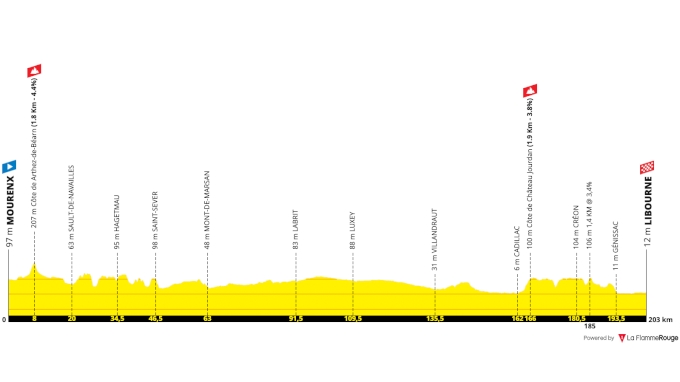
Stage 20
The 2020 Tour de France had such an enthralling stage 20 time trial, that the organizers have decided again put a test against the clock on the penultimate day of the race in 2021.
Unlike the Planche des Belles Filles time trial which saw Tadej Pogacar overthrow Primoz Roglic, in 2021 the final time trial will be pan flat. The profile should favor general classification hopefuls who struggle in the mountains.
Will the Tour de France once again come down to a last minute race against the clock?
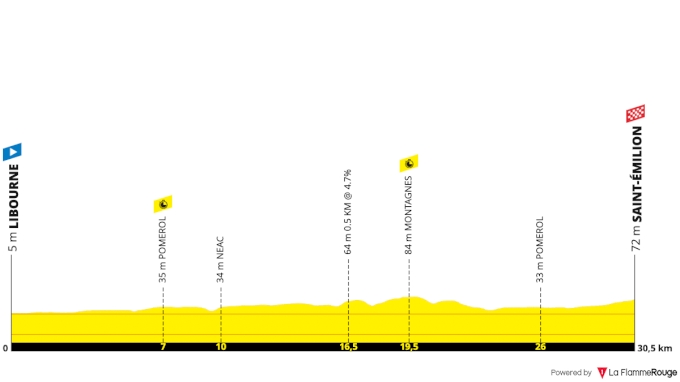
Stage 21
We know it. We love the last 10 kilometers of it. The Tour de France will once again come to a close with the sprinter's classic on the wide and bumpy Parisian avenue, the Champs-Élysées.
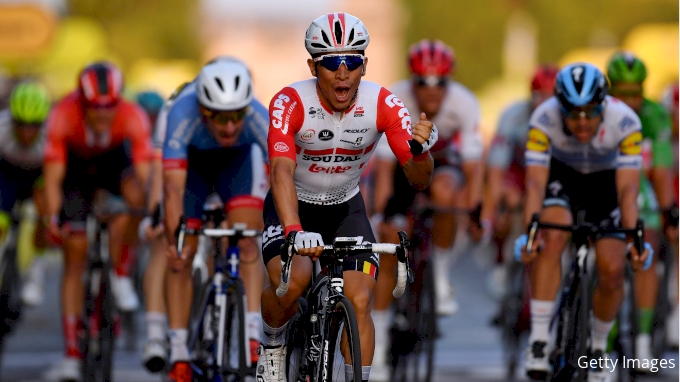
Stats
- 3 summit finishes
- 6 major mountain stages
- 5 medium mountain stages
- 8 flat stages
- 2 individual time trials
- 6 time bonus sprints strategically placed at the top of climbs throughout the race
What Does It All Mean?
The 2021 Tour de France route is very well balanced. The race features both very long and very short stages, as well as iconic mountains and lesser known climbs.
Classics riders and sprinters both have their fair share of opportunities, and flat time trials bookend the Tour's mountains, creating general classification drama and intrigue all the way to the eve of Paris.
It is worth noting that riders who excel at high altitudes may find themselves at an advantage in the 2021 Tour de France. The peloton will spend both rest days above 2000 meters, which will make recovery a major challenge for some.